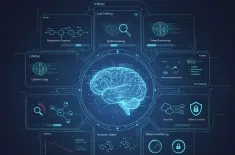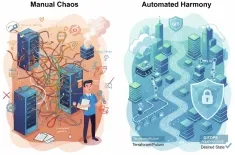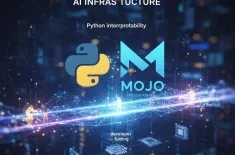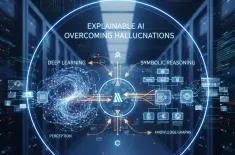Explore advanced architectures to boost model truthfulness, generate verifiable outputs, and ensure AI trust and safety.
The rise of generative AI has ushered in a new era of automated content creation, but this power is tempered by a significant challenge: AI hallucination. This term describes the phenomenon where a large language model (LLM) confidently produces information that is false, misleading, or entirely fabricated, despite the fluency and coherence of the output. These fabrications—sometimes called confabulations—pose a direct threat to model truthfulness and the wider adoption of AI systems, particularly in high-stakes domains like law, medicine, and finance. Building public and enterprise confidence requires innovative architectural solutions that enforce verifiable outputs and establish robust AI trust and safety protocols.
Understanding AI Hallucination
AI hallucination is not a sign of the model's sentience or intent to deceive; rather, it is a byproduct of its core functionality. LLMs are sophisticated pattern-matching engines trained on massive datasets to predict the most statistically probable next word in a sequence. When the model encounters an ambiguous prompt, a knowledge gap in its training data, or an instruction that pushes its contextual boundaries, it defaults to plausible-sounding fabrication based on learned patterns instead of admitting uncertainty or searching for factual context.
Root Causes of Fabrication
- Training Data Limitations: The model’s internal knowledge, or parametric memory, is finite and static, based only on the data it was trained on (which has a knowledge cutoff date). If a query requires current information or highly domain-specific knowledge not well-represented in its corpus, the model must guess.
- Next-Word Prediction Priority: LLM architectures, often based on the Transformer network, are optimized for textual fluency and coherence. This focus on generating natural, flowing text can inadvertently prioritize linguistic plausibility over factual correctness, essentially rewarding "confident guessing" in the model's internal scoring.
- Probabilistic Nature: The model assigns a probability score to every possible next word. When multiple potential paths have similar, high probabilities, the model's selection can lead it down a factually incorrect, yet linguistically coherent, route.
- Data Contradictions: If the training corpus contains conflicting information about a fact (e.g., from different or less-reliable sources), the model may output a blend or a confidently chosen but incorrect fact.
The ultimate goal of enhancing model truthfulness is to shift the AI from being a plausibility generator to a factuality anchor. This necessitates moving beyond relying solely on the model's internal memory and integrating external, authoritative knowledge bases.
Architectural Methods to Prevent Hallucination
To curb hallucinations, the industry is moving towards hybrid architectures that augment the core generative model with external mechanisms for data retrieval, verification, and reasoning. These methods aim to ground the model's output in facts, making its claims verifiable outputs.
Retrieval-Augmented Generation (RAG)
The most transformative and widely adopted architecture for combating hallucination is Retrieval-Augmented Generation (RAG). RAG addresses the limitations of an LLM's static training data by giving it access to up-to-date, external, and domain-specific information at the time of inference.
How RAG Works:
- Retrieval Phase: When a user submits a query, the RAG system first analyzes the query's semantic meaning. It then uses a semantic search mechanism, often utilizing vector databases and embeddings, to search a vast, curated knowledge base (e.g., internal company documents, regulatory databases, verified scientific articles). It retrieves the top N most relevant snippets or documents.
- Augmentation Phase: The retrieved, factually grounded text is then prepended or incorporated into the user's original query as context. This creates an "enhanced prompt."
- Generation Phase: The LLM receives this augmented prompt and is explicitly instructed to generate a response only based on the provided context.
RAG's Impact on Truthfulness:
By compelling the LLM to generate text based on specific, high-quality, and external evidence rather than its vast, generalized, and potentially outdated internal memory, RAG dramatically increases the likelihood of model truthfulness. Furthermore, well-implemented RAG systems can display the sources used, allowing users to trace the information, which is key to generating verifiable outputs and enhancing AI trust and safety.
Factuality-Enhanced Training and Alignment
Beyond RAG, improvements are being made directly to the model's training and alignment stages to reinforce factuality.
- Supervised Fine-Tuning (SFT) on Factual Data: General-purpose LLMs can be fine-tuned on smaller, highly-curated, domain-specific datasets that are meticulously fact-checked. This specialization reduces the model's reliance on its broad, general knowledge when answering questions within that specific domain, lowering the risk of intrinsic hallucinations.
- Reinforcement Learning from Human Feedback (RLHF) for Truthfulness: Standard RLHF aims to align model outputs with human preferences (e.g., helpfulness, harmlessness). This process can be modified to specifically reward models for truthfulness and penalize them for confident but incorrect answers. This involves creating specialized training prompts designed to elicit uncertain scenarios and rewarding the model for abstaining or appropriately acknowledging its uncertainty rather than guessing.
- Constitutional AI: This emerging technique embeds a set of guiding principles, or a "constitution," directly into the AI's training objectives. This constitution can include principles promoting factuality, non-contradiction, and appropriate uncertainty acknowledgment, training the model to self-correct against potential falsehoods.
Multi-Agent and Verification Architectures
These advanced methods involve chaining or orchestrating multiple models, sometimes referred to as 'AI Agents,' to perform self-verification and peer review before presenting a final answer.
- Self-Correction and Reasoning Chains: Techniques like Chain-of-Thought (CoT) prompting instruct the LLM to articulate its reasoning steps before providing a final answer. A subsequent verification step can then be added, where the model reviews its own reasoning, checking for logical inconsistencies or claims that can be easily fact-checked via an external tool (like a calculator or a quick search).
- Critic/Verifier Loops: In this architecture, a primary generative model produces an output. A second, specialized critic model (which can be a smaller, fact-focused LLM or a knowledge graph validator) then evaluates the primary model's output for factual accuracy and internal consistency. If the critic flags an error, the primary model is prompted to refine its response. This ensemble approach mitigates the weaknesses of a single model.
- Source Citation Requirements: Implementing systems that require the AI to not just retrieve data but to also generate explicit, specific citations for every factual claim in its output. This makes it easier for users and downstream systems to verify the information, satisfying a core requirement for verifiable outputs.
The Human Role in AI Trust and Safety
While architectural solutions like RAG are powerful, they are not silver bullets. The continuous monitoring, curation, and governance of both the models and the knowledge bases they reference remain essential.
Data Governance for RAG Systems
A RAG system is only as good as the knowledge base it uses. Data governance is a critical component of AI trust and safety, ensuring the integrity of the reference documents. This involves:
- Data Curation: Rigorously cleaning, structuring, and updating the external knowledge base to remove noise, resolve contradictions, and incorporate the latest information.
- Quality Filtering: Implementing automated tools to assess the credibility and authority of sources before they are added to the knowledge base.
- Continuous Monitoring: Regularly testing the entire RAG pipeline—from retrieval to generation—with adversarial prompts designed to trigger known or potential hallucinations.
The Need for Human Oversight
Ultimately, the goal of creating verifiable outputs is to empower human users to maintain critical judgment. In high-stakes applications, human-in-the-loop validation is indispensable. Users must be educated on how to interpret confidence scores, check provided citations, and be aware that AI-generated content still requires human expertise for final sign-off. The convergence of robust architectural safeguards and informed human oversight is the future of truly trustworthy AI.



































